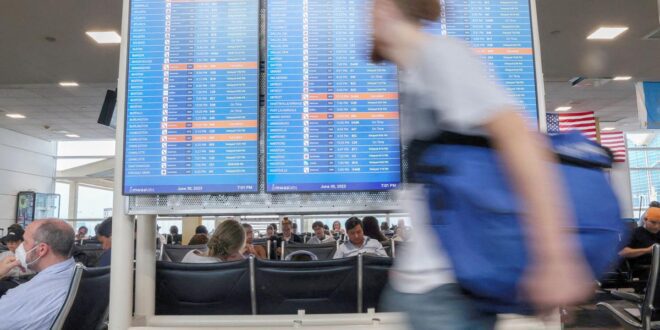Why summer heat is more likely to delay your flight
During the summer months, travelers often find themselves dealing with unexpected flight delays and cancellations. While there are several factors that can contribute to these disruptions, one of the main culprits is the summer heat. The extreme temperatures can have a significant impact on airport operations, leading to potential delays and frustrations for passengers.
Heat and aircraft performance
Extreme heat can affect the performance of an aircraft in several ways. Firstly, hot air is less dense than cold air, which means that planes require a longer runway to generate enough lift for takeoff. In cases where airport runways may already be limited in length, the reduced lift capabilities can lead to weight restrictions for departing flights, causing delays as airlines need to offload cargo or reduce the number of passengers on board.
Secondly, high temperatures can negatively impact engine performance. Jet engines rely on cooler air to maintain proper combustion and maximize thrust. When the air is hot, it becomes less dense and contains fewer oxygen molecules, resulting in reduced engine power. This can lead to longer takeoff rolls, slower climb rates, and even limited cruising speeds, all of which contribute to longer flight times and potential delays.
Effects on airport operations
In addition to affecting aircraft performance, extreme heat can also impact other crucial components of airport operations. One major concern is the potential softening of the tarmac under high temperatures. When the pavement becomes too hot, it can experience stress and deformations, posing safety risks for aircraft during takeoff and landing. In some cases, airports may need to implement weight restrictions or close runways temporarily until the pavement cools down, causing flight delays and diversions.
Extreme heat can also impact ground support equipment, such as fuel trucks and baggage loaders. These vehicles often rely on diesel engines, which can struggle to operate efficiently in high temperatures. If equipment malfunctions or becomes unavailable due to overheating, airlines may experience delays in refueling or baggage handling, further compounding the overall delays caused by the heat.
Weather-related challenges
Summer heat is often accompanied by severe weather conditions such as thunderstorms, which can further disrupt air travel. Thunderstorms can cause flight diversions, delays, and even cancellations for safety reasons. The combination of extreme heat and thunderstorm activity can lead to a heightened risk of convective activity, including strong winds, heavy rain, and lightning, making it unsafe for planes to take off or land.
Preventing and mitigating delays
While it is impossible to control the weather, airlines and airports take proactive measures to minimize the impact of summer heat on flight operations. Regular maintenance and inspection of aircraft engines and equipment help to identify any potential issues before they cause delays. In addition, airports may invest in runway improvements and asphalt technologies that can better withstand high temperatures.
Flight planning also plays a crucial role in mitigating delays. Airlines closely monitor weather conditions and may adjust flight routes or schedules to avoid severe weather systems. By proactively rerouting planes, airlines can minimize disruptions and keep passengers safe.
Conclusion
Summer heat can significantly disrupt air travel operations, causing delays and frustrations for both airlines and passengers. The effects of extreme temperatures on aircraft performance, airport infrastructure, and ground operations make it necessary for airlines and airports to take proactive measures and adapt their operations accordingly. While delays due to summer heat may be unavoidable at times, airlines and airports continue to work towards minimizing the impact and providing a smooth travel experience for passengers during the hot summer months.
 Mind Uncharted Explore. Discover. Learn.
Mind Uncharted Explore. Discover. Learn.


